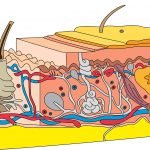Most Naturopathic Doctors get into the field for a love of helping people and making a difference to their community. However, the current paradigm of medicine and private practice in the USA dictates that as well as being great clinicians, NDs have to be good business people if they want to have a sustainable work-life balance and a practice that, once built and sold, can provide for their retirement.[protected]
Clinically, as naturopaths, you are aided by the amazing design of the human body, its complex interconnected systems and innate capacity to heal. Unfortunately, your practice, like the rest of the universe, tends towards entropy without adequate systems in place. Refined and functional systems will decrease entropy, reduce stress and increase productivity.
“The value of your equity [in the practice] is directly proportional to how well your practice works. And how well your practice works is directly proportional to the effectiveness of the systems you have put into place, upon which the operation of your practice depends.”
~ Michael Gerber, The E-Myth Physician
In his best-selling books ‘The E-Myth’ and ‘E-Myth Physician’ Michael Gerber describes the three ‘hats’ that business owners need to be able to wear in order to grow a successful business. These hats are described as ‘Entrepreneur’, ‘Manager’ and ‘Technician’, and are typically worn by the same person initially… you!
During your naturopathic schooling how much of your time did you spend learning operate effectively wearing those three hats? Chances are you spent over 95% of your time on learning to wear the ‘technician’ hat, and this means that unless you sought outside support, or had a natural passion or aptitude for those other areas, you might end up as a statistic yourself: One of the 70% of Naturopaths not in full time practice 5 years after receiving their degree.
The development of the systems that run the practice is the responsibility of the entrepreneur and the manager working together. According to Gerber “A manager’s job is to invent the systems through which the owner’s vision is consistently and faithfully manifested at the operating level of the business.” This should prompt the following questions that only you can answer.
1) What is your vision for your practice?
2) What systems will need to be in place for your business to run smoothly?
3) How will those systems be refined and improved over time?
4) How will I keep track of my progress towards my vision?
In this article we will concentrate on the second question, but please look out for future articles specific to questions three and four. Whatever the positioning or unique features of your clinical practice, systems need to be created and developed for the following broad categories.
- Clinical Systems (Patient Documentation, Booking, Charts, Lab Work, etc)
- Practice ‘Flow’ Systems (Cleaning, Daily Task Checklist, Inventory, Staff “Huddles”, etc)
- Financial Systems (Accounting, Income Dashboard, Insurance, Accounts Receivable etc)
- Marketing Systems (Phone scripts, newsletters, internal marketing, branding, etc)
Once these systems are developed, by taking them out of your head and writing them on paper, it makes it possible to grow past a single person business model and towards a practice of objective (and sellable!) value. These pieces of paper when organized and collated will form the ‘Procedural Manual’ for your practice. This manual should be the first thing you look for if you buy a practice and the first thing you present when you sell your practice.
One of the main areas in which this procedural manual will instantly add value to the practice is your ability to manage your practice team. In the long run, your staff will make you or break you and providing a framework for them to be effective at running your business will allow you the freedom to express your true passion. Managing people is almost impossible, most people can’t event manage themselves never mind a staff, but managing a process is not only possible, but I dare say easy with the right systems in place. Ray Kroc said it best:
“The system runs the business, and the people run the system.”
Here below are some easy starting points for developing effective practice systems. The two questions you always want to be asking yourself when operating with your manager hat are
1) What is the result we want / intend to produce?
2) How can we produce that result every single time?
- Set aside time in your schedule to wear your manager and entrepreneur hats. Use different colors on your schedule to denote it. Use this time to work ON your business and not just IN your business. This is a perfect time for system development.
- If you do not yet have a procedural manual, go out and buy yourself a three ring binder, file inserts and a file labeler. This will form the physical basis of your new procedural manual.
- Document, or have your staff document, every single thing that they do, or should do, in the course of a day, week and month across the spectrum of required systems mentioned above
- Put that into the binder, adding tabs over time to separate the different sections in a way that makes the most sense to you, and maximizes ease of use for your team
Holistic Practice Development helps practitioners to grow healthy, sustainable practices, regardless of demographic or economic environment. Dr. Andrew Colyer and James Maskell have a combined 30 years of experience in the health care industry, and would love to help you grow your practice. For your free practice strategy session, please visit: http://www.HolisticPracticeDevelopment.com[/protected]





